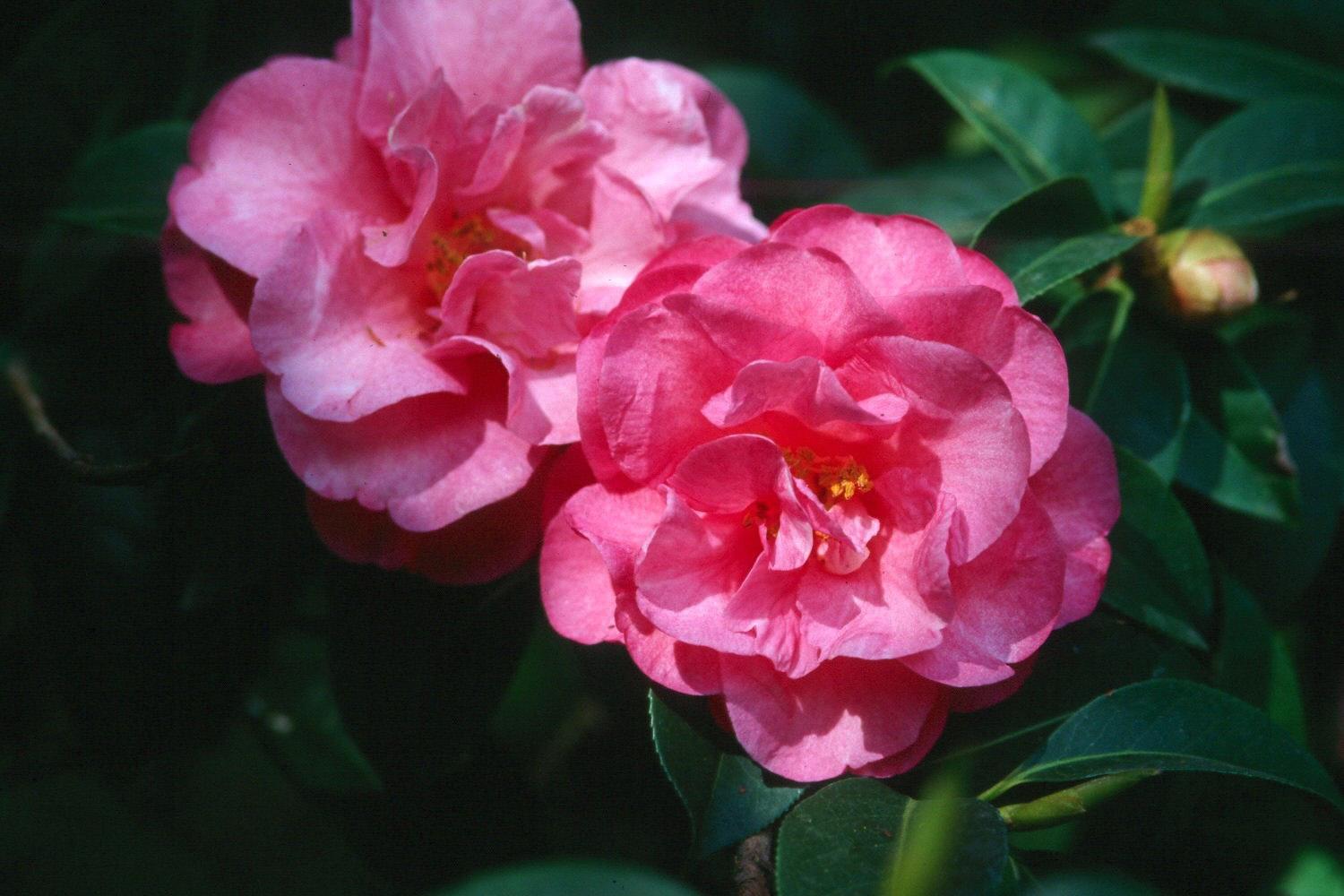Information Possibly Outdated
The information presented on this page was originally released on November 4, 2002. It may not be outdated, but please search our site for more current information. If you plan to quote or reference this information in a publication, please check with the Extension specialist or author before proceeding.
Shishi Gashira camellia garners fall medallion
By Norman Winter
MSU Horticulturist
Central Mississippi Research & Extension Center
Shishi Gashira is without a doubt the finest landscape camellia on the market, and it has been chosen as a 2002 Mississippi Medallion award winner for the fall. These drop-dead gorgeous camellia sasanquas are waiting for you now at your local garden center.
Their waxy, leather leaves coupled with blooms that are as pretty as roses reveal that these camellias are not only good as shrubs but also for use as foundation plantings.
The camellia is in the tea family and is a staple of the Southern garden. Shishi Gashira is different from most camellias in that it is a dwarf to compact form of camellia sasanqua with rose-pink blooms. It is reportedly from the Kansai area of Japan.
For newcomers who don't know one camellia from another, there are two basic types sold at your garden center. The camellia sasanqua blooms in the fall and early winter, and the camellia japonica blooms in the winter and early spring. There are varieties of each that will make that last statement a lie, but for the most part it is true. The camellia sasanqua has a track record of taking extremely cold winters better than the japonica.
Shishi Gashira can take more sun than camellia japonicas, but I prefer to plant in partial shade. Prepare the bed by incorporating 3 to 4 inches of organic matter, two pounds of a 5-10-5 fertilizer per 100 square feet of planting area and till deeply.
Notice that I said bed. It is so important to put the Shishi Gashira and every other kind of shrub in a bed rather than simply digging holes in turf. Dig the planting hole three to five times as wide as the root ball but no deeper. Place the camellia in the hole and backfill with soil, tamp and water to settle, and then apply mulch.
By choosing both Camellia sasanquas and Camellia japonicas, we can have the best of all worlds, fall and winter bloom, winter and spring bloom and great summertime foliage as pretty as a ligustrum.
Moisture will most likely be critical the first summer, and that is one of the best reasons for fall planting of trees and shrubs. Research indicates that planting trees and shrubs in the fall will give plants almost a full growing season's advantage over those planted in the spring.
The roots of the plants will get established and continue to grow all fall even when top growth has ceased. Next spring when new growth resumes, the root system will be able to supply all of the plant's needs.
Feed a month after transplanting with a light application of a slow-released, balanced fertilizer. Feed established plantings with a slow-released camellia fertilizer or balanced (8-8-8) fertilizer in late spring at one pound per 100 square feet of planted area. Azalea or camellia blends of fertilizer are great, too.
Water during dry periods and keep well mulched. In fact, get out and rake every pine needle or leaf that falls and consider it like picking up dollar bills. Use a horticultural oil to control scale should they become a problem. Prune after blooming to shape.
The Shishi Gashira combines well as lower level plants adjacent to evergreens such as hollies like Festive, Little Red or junipers. They also work well in combination with Southern Indica type azaleas like Formosa and Judge Solomon.
For a pretty fall and winter display, plant pansies in your bed next to the Shishi Gashira. White Crystal Bowl pansies would look nice, but something like Imperial Frosty Rose, Bingo Rose Frost and Bingo Pink Shades would look really exceptional.
Look for the Mississippi Medallion point-of-sale card directing you to this awesome variety of camellia.



